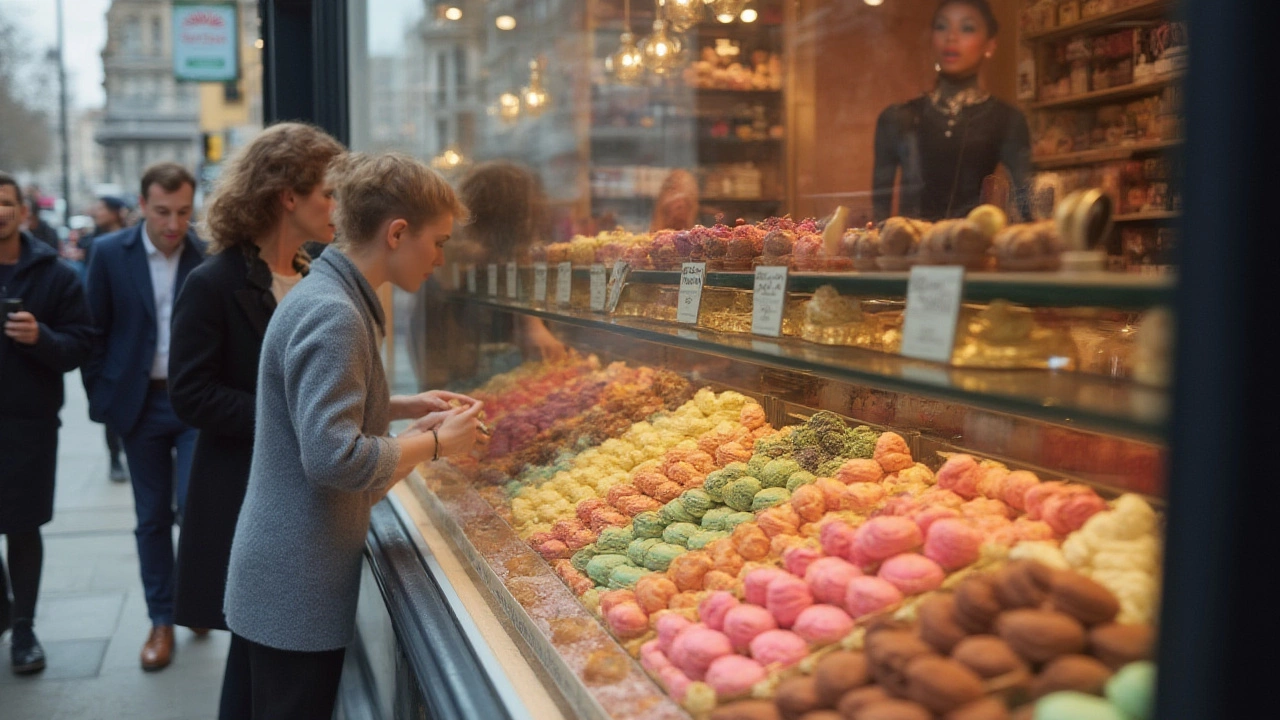
How Much Does a Hundred Macarons Cost? 2025 Macaron Pricing Guide
Curious about the going rate for a hundred macarons? Explore current macaron prices, see what influences costs, and get tips for buying quality macarons in 2025.
If you love the crisp shell and chewy center of a macaron, you’re in the right place. Whether you bake them at home or order from a bakery, knowing a few key facts makes all the difference. First, the classic French macaron is about 2‑2.5 inches in diameter. That size gives the perfect bite‑to‑crunch ratio and works well for most fillings.
Size matters when you’re planning a party. A 5‑tier macaron tower, for example, can hold about 150‑180 macarons if each tier is spaced 2 inches apart. When you stack them, keep the tiers level and use a sturdy base – a cake board or a thick cardboard circle works fine. This simple tip prevents wobbling and makes the tower look professional.
Not every event needs giant macarons. For cocktail parties, mini‑size macarons (about 1.5 inches) let guests enjoy more flavors without feeling stuffed. For weddings, the classic size looks elegant and pairs nicely with a tiered cake. If you’re unsure, ask your bakery for a sample platter. Seeing the actual size in person helps you decide how many you’ll need.
When you bake at home, use a consistent pipe tip – a 1/2 inch round tip is a reliable starter. The batter should flow slowly off the tip; if it streams too fast, you’ll get uneven shells. Let the piped rounds sit for 30‑60 minutes before baking so they form a smooth skin. This “rest” step is what gives you that signature “pied” look.
Macarons can be pricey because they’re labor‑intensive. A box of 12 from a boutique bakery can range from $20 to $40. To keep costs down, compare prices per macaron rather than per box. Buying in bulk or ordering a custom tower often reduces the per‑piece price. Some bakeries even offer a “build‑your‑own” option where you pick flavors and save on decoration fees.
If you bake them yourself, the ingredient cost is surprisingly low – about $0.80 per dozen for quality almond flour, egg whites, and sugar. The biggest expense is time, but with a good recipe you can batch‑bake 2‑3 trays in an hour. Use a kitchen scale for accurate measurements – a small variance can ruin the texture.
Finally, remember that storage affects both taste and price. Store finished macarons in an airtight container in the fridge for up to three days. If you need to keep them longer, freeze them for up to a month and thaw at room temperature before serving. Proper storage preserves the delicate shell and keeps the filling fresh, so you get the best bang for your buck.
With the right size, a solid cost plan, and simple storage tricks, your macaron experience – whether you’re a baker or a buyer – will be smooth and enjoyable. Happy munching!

Curious about the going rate for a hundred macarons? Explore current macaron prices, see what influences costs, and get tips for buying quality macarons in 2025.